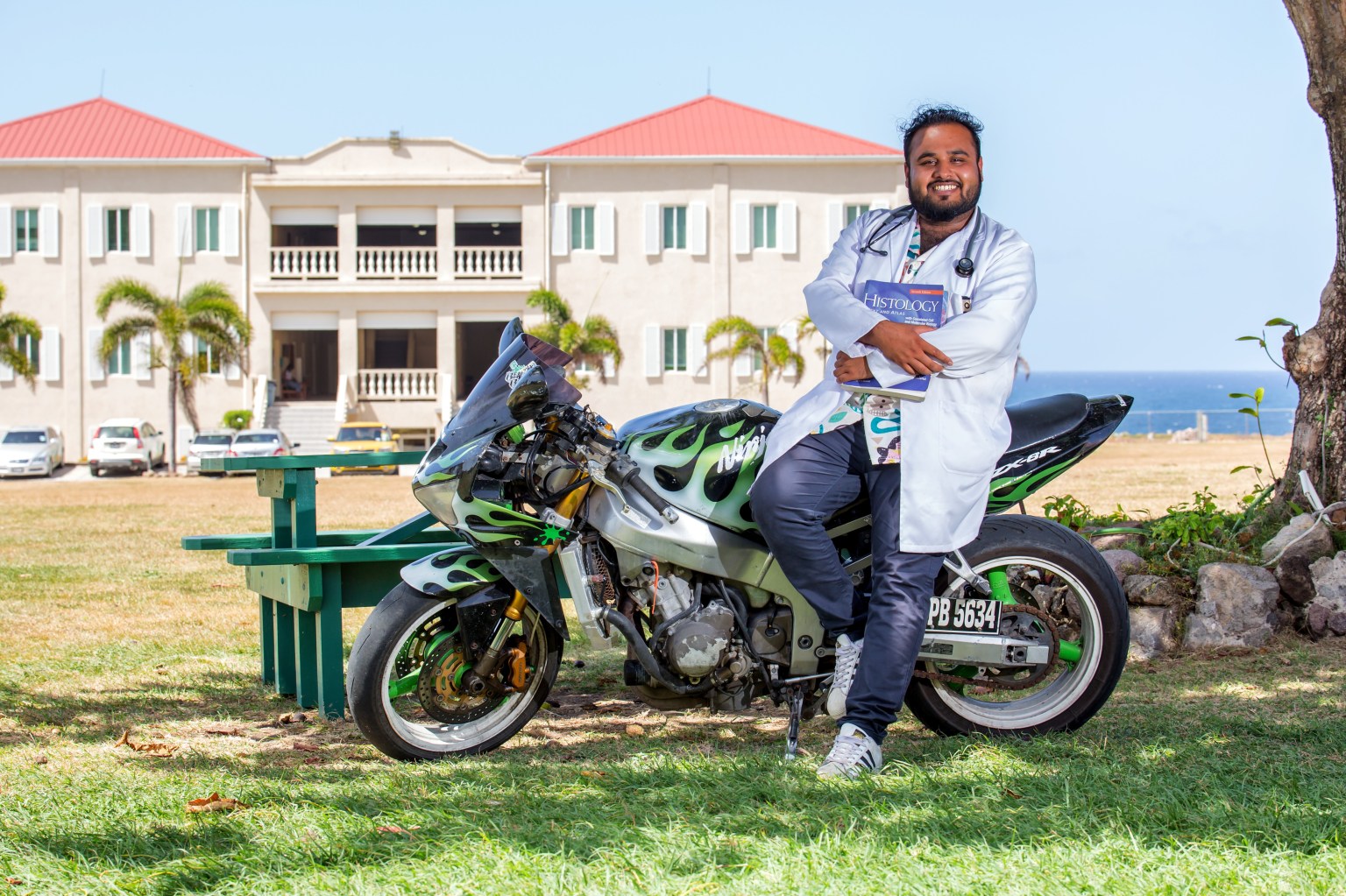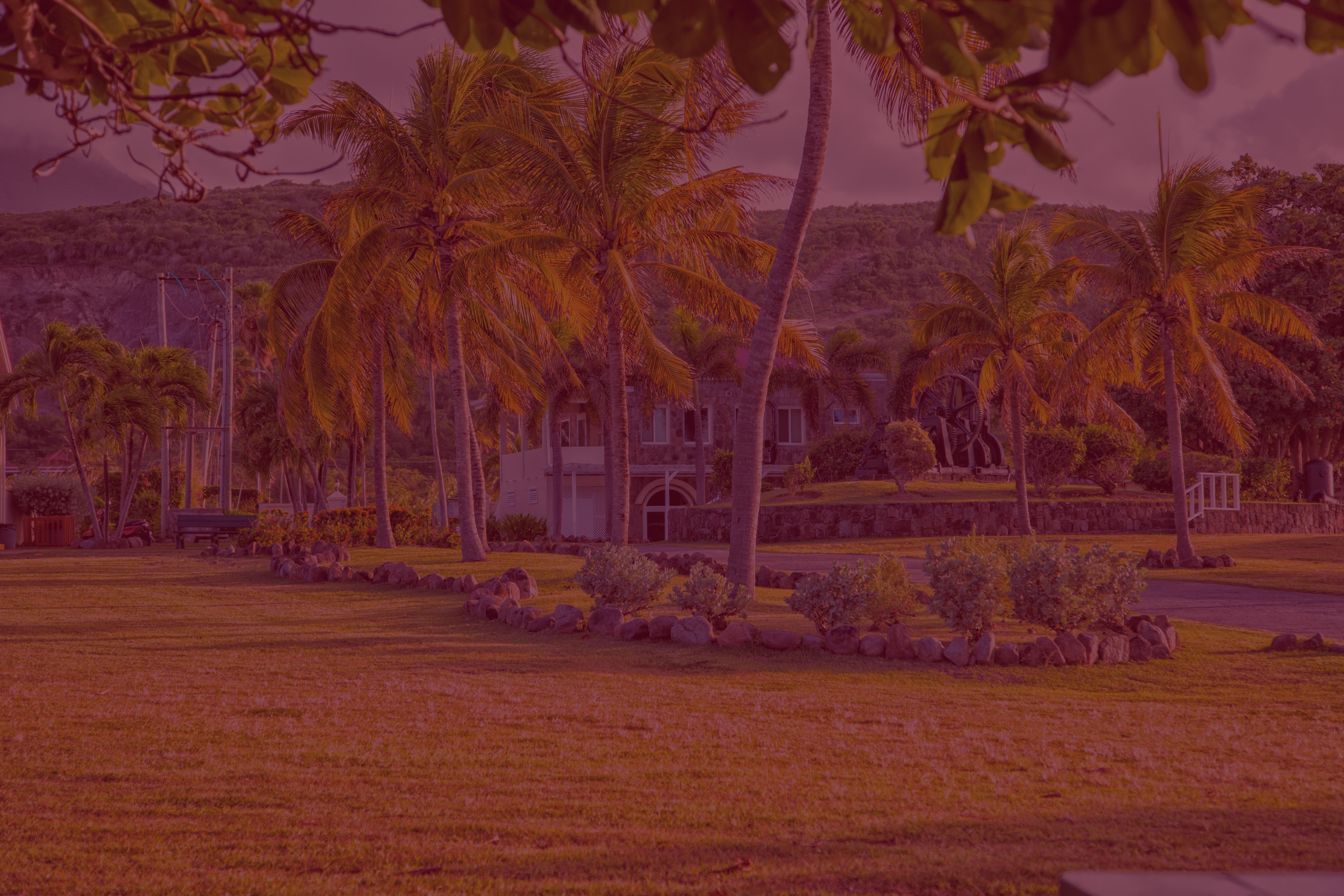Achieve Your Dreams
Learn about the medical school journey through to residency from our alum, Vijitha Mahalingam, MD, a Psychiatry Resident at Queen’s University, Canada.
Get to know MUA at an upcoming event!

Learn about travel, housing, student organizations and recreational opportunities when you study medicine on the beautiful island of Nevis.
It’s true that classrooms, labs, and studies will be the focus of your time at Medical University of the Americas (MUA)—but there is more to medical school than that, particularly here.
Learn about the medical school journey through to residency from our alum, Vijitha Mahalingam, MD, a Psychiatry Resident at Queen’s University, Canada.
So yes, you will study hard when you come to MUA. But you will leave not only with an incomparable medical education but with good friends and a lifetime of memories.
At MUA, you’ll find a wide array of student organizations and groups, including an active Student Government Association.
The goal of SGA is to promote self-improvement, organize recreational activities, and arbitrate and resolve student issues.
Each semester, the student body elects a president, vice president, secretary, and treasurer.
Class representatives to SGA are elected from each of the five Basic Science semesters as well as from the Gateway Medical Program. SGA sponsors numerous student events and health-related projects for the island community. The officers meet regularly with the medical school administration to discuss student issues.
AMSA is a student-governed national organization committed to representing the concerns of physicians in training. MUA strongly encourages membership in the American Medical Student Association.
SNMA is committed to supporting current and future underrepresented minority medical students, addressing the needs of underserved communities, and increasing the number of clinically excellent, culturally competent, and socially conscious physicians.
SOS is a support group for the spouses and children of medical students attending MUA. This network organizes events and provides support and assistance through the initial adjustment to island life.
CMSA meets every Sunday for an informal worship service led by fellow students. This Christian group is open to all students and is non-denominational.
EAMSA promotes Eastern Asian culture and heritage among students, faculty, and staff. Membership is open to all students of MUA. EAMSA encourages members from various cultural and ethnic backgrounds to share their cultural experiences with the group. Celebrating important festivals and social events are sponsored by EAMSA throughout the school year.
MMSA promotes Muslim culture and heritage among students, faculty, and staff. Membership is open to all students of MUA. MMSA encourages members from various cultural and ethnic backgrounds to share their cultural experiences with the group. Celebrating important festivals and social events are sponsored by MMSA throughout the school year.
Nevis is a wonderful place to attend medical school.
Beautiful, safe, and easy to get to, Nevis is one of the many volcanic islands that stretch along the eastern Caribbean Sea, where it meets the Atlantic Ocean. Tourists come to Nevis to enjoy the warm Caribbean water, bask on the white sand beaches, hike the rain forest, snorkel among the reefs, and investigate the ruins of the sugar cane era that dot the island. Nevis is also well known for its excellent restaurants and charming inns—many of them old plantation “great houses.”
But for all it has to offer, Nevis remains very much a low-key destination, a captivating yet tranquil oasis in which to pursue your medical studies.
Upon arrival in Nevis, the university is a short distance from either the airport or ferry.

Transportation on Nevis is easy and extremely enjoyable: You can make a circuit of the island in less than an hour, passing by all the major beaches and small villages; the capital, Charlestown; the airport, and other points of interest.
Driving is on the left side of the road. In order to operate any vehicle on the island, it is necessary to obtain a temporary local driver’s license, which costs $48 U.S. for one year. In addition to good public transportation, there are approximately 15 car rental agencies in Nevis.
Students are permitted to acquire private transportation, and there is a steady turnover of vehicles, with students leaving the island selling to the new members of the incoming classes. When you arrive, you can obtain more information about getting a driver’s license, insurance, and registering your car at the Administration Office on campus.
Nevis is sunny all year and temperatures average 78° F (25° C). There is no rainy season, but short, heavy showers are common from August to February. Thin, light clothing is best.
A wide range of everyday living products are available on Nevis, but keep in mind that it is a small island, so you may not always find your favorite brand or size of product—at least when you first arrive. If there is something you absolutely must have, consider bringing it along. And remember: Shipping ahead makes travel easier and less expensive.
A surprisingly wide range of regional ingredients are available on Nevis, but again, if it’s a “must-have,” consider bringing it or shipping it in advance.
As a medical student, you will be pressed for time, so consider bringing hair clippers to avoid the trip to the hairdresser.
Printing supplies tend to be expensive in Nevis, so be sure to bring extra ink cartridges and paper.
Electrical outlets in Nevis are 220v cycle; however, the university and dorms are 110v, the same as in the U.S. and Canada. It is a good idea to bring along converters and a surge protector as added protection for any electronic equipment.
Remember that everything you bring must go somewhere when you leave. Many families recycle items at the end of their time on the island, but this is done before the first-semester students arrive.
If you are renting a home on Nevis (2nd through 5th-semester students primarily), you will want to check in advance to make sure the items you need are included in the rental. While most homes have a microwave, TV, refrigerator, and basic cooking items, not all rentals are identical. For example, check if there is an iron and ironing board if that is important. Are linens provided, and even if they are, would you be more comfortable with your own?
The U.S. dollar and the Eastern Caribbean dollar are accepted forms of currency. The Eastern Caribbean dollar (EC) is tied to the U.S. dollar at $2.70 EC per $1.00 US. Visa and MasterCard are also widely accepted.
Banking hours are Monday-Thursday, 8 am-2 pm, and Friday, 8 am-4 pm. There are ATMs in Charlestown and at the airport. Money is dispensed in EC dollars.
Nevis has a well-developed infrastructure for phone, Internet, and cable TV:
Caribbean Cable provides cable television, as well as cable-based internet access. Many homes and apartments include telephones.
Cellular phones on Nevis use the GSM system. Many cell phone companies provide discounted rates to MUA students.
Many students make international telephone calls with their computer using a VoIP service such as Skype or Vonage. In addition, web-based calls can be made using services such as www.iconnecthere.com.
Numerous religious denominations are represented on Nevis. You will find churches for the Anglican, Baptist, Roman Catholic, Seventh-Day Adventist, Church of God, and Methodist religions. A wide range of religious affiliations are represented among the student body.
If you will be bringing children with you to MUA, there are a number of schooling options on the island, including daycare and both public and private schools for primary and secondary education.
The education system is similar to the British system. Children graduate from 6th grade and attend secondary schools starting at Form 1. The grades are Forms 1-6. Forms 1-5 (equivalent to grades 7-11) are in preparation to sit for the “O” Level exams, and the 2 years of Form 6 are in preparation to sit for the “A” Level exams. Classes begin at 8:30 a.m. and end at 3:30 p.m.
All classes are taught in English.
For families with preschool-age children, there are several preschools in Nevis.

Visit one of the beautifully restored sugar plantations that are now elegant inns.
The official Nevis Tourism Website is an excellent source of information about the island.
Josh Lowder
MD Student
United States
Sheldon Vogt, MD
Class of 2024
General Surgery Resident
Loma Linda, California, United States